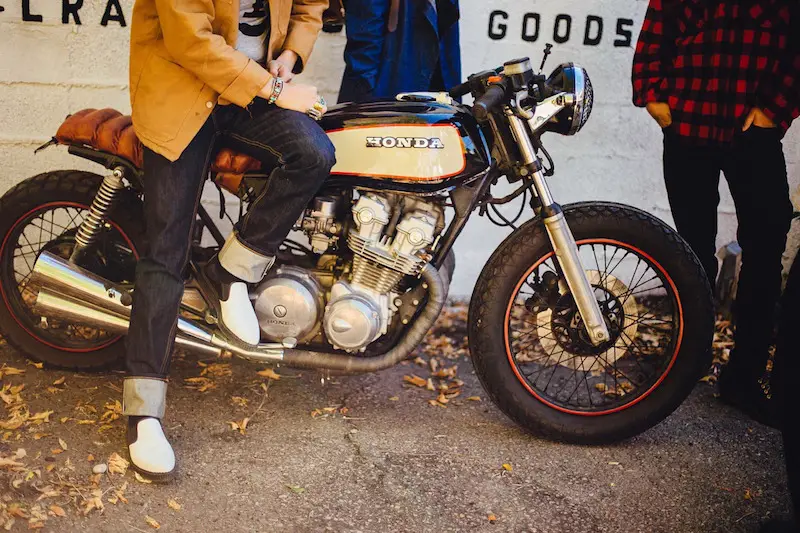
Have you ever gone out to your bike, put the key in, hit the starter, and the motorcycle doesn’t start? This is a frustrating experience that could ruin your motorcycle ride for that day.
By design, motorcycles are simple and easy to work on. Doing your own motorcycle maintenance is a great way to get familiar with the intricacies of your bike.
With that in mind, it can still be tricky to find out why your motorcycle isn’t starting. Despite only owning 3 different motorcycles, this is something that has happened to me with each one.
Doing basic maintenance on your own bike and having the skills to research any problems makes it easier to troubleshoot a motorcycle that isn’t starting. Even if you’re not too skilled or have the confidence in working on your bike, this guide will help you learn why your motorcycle isn’t firing up.
In this post, we’ll look at the reasons why a motorcycle won’t start. Then, we’ll cover some easy fixes so you can be on your way and enjoying the ride.
Why Your Motorcycle Won’t Start and How to Fix a Motorcycle That Won’t Start
The Motorcycle Battery is Dead
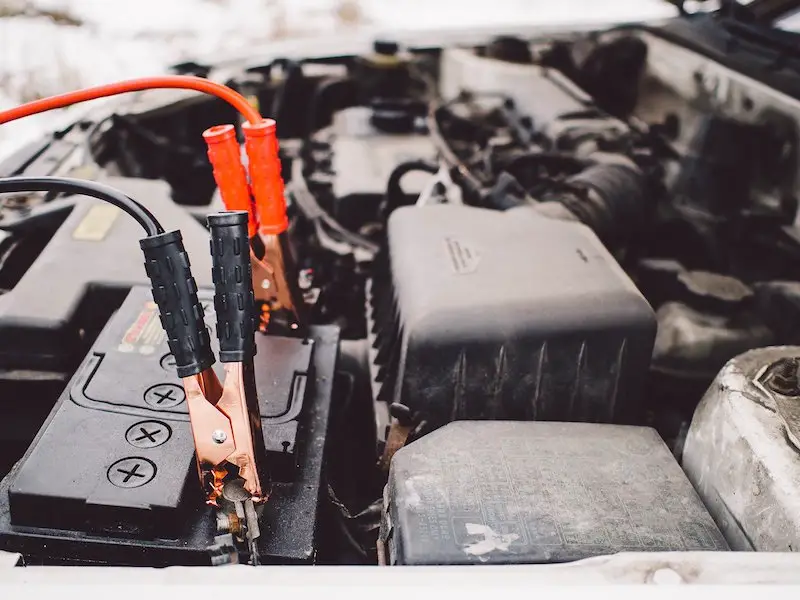
One of the most common reasons a motorcycle won’t start, or is sluggish trying to start, is from a dead battery. This also happens to be the easiest problem to diagnose and has a simple solution for getting the bike started.
If the battery is low, you’ll hit the starter and the bike might light up and turn over but it won’t start. With a dead battery the bike probably won’t light up and it definitely won’t turn over at all when you go to start it.
This happens when a motorcycle isn’t used for an extended period of time. The battery slowly loses its charge and the capacity to power your motorcycle.
Using a battery maintainer during the winter or checking the bike for parasitic drain can prevent this from happening.
How to Fix a Dead Motorcycle Battery
Fixing a dead motorcycle battery is easy. As long as you have the right tools and equipment you’ll be up and running in no time.
Obviously, the easiest fix is to use a motorcycle jump starter to get the battery quickly powered to turn the engine over. Once your bike turns on it will start charging the battery, which should get fully charged when you’re riding.
If the battery dies when you’re out on the road you can try bump starting the bike. Check out this helpful guide on how to bump start your motorcycle. Keep in mind that not every bike can be bump started.
However, there could be a problem with the battery that needs to be looked into it. Using a multimeter, check the volts the battery is giving off, if the voltage is around or lower than 9 volts you’ll need to buy a new motorcycle battery.
Finally, consider using a battery tender to charge the battery when you’re not using it. This will ensure it’s always fully charged whenever you’re ready to ride.
The Carburetor is Dirty
Another popular reason why your motorcycle isn’t starting is that the carburetor is dirty or clogged. This would only happen on carbureted motorcycles, typically older bikes or older models that haven’t been changed in years.
Most modern bikes use electronic fuel injection, or EFI, won’t run into this problem. Those of you having starting problems with a carbureted bike will want to determine is it’s the carb causing your problems.
Symptoms of a Dirty Carburetor
It’s easy to tell if a dirty or malfunctioning carburetor is the starting problem you’re having. For bikes with an electric starter, squirt starter fluid straight into the carburetor (after removing the air intake).
If the bike starts, or the engine starts turning over and wanting to start, then you know the carburetor is clogged or dirty. This is an easy fix, though you’ll need to take the time to clean the carb.
How Does a Carburetor Get Dirty?
It’s possible for dirt and deposits to build up in the motorcycle fuel system. Over time, this build-up increases and can potentially block the jets in your carburetor.
Carburetor jets are extremely small and even a small blockage can prevent them from working correctly. This problem is exacerbated if you’re not using a fuel filter for your motorcycle.
How to Fix a Clogged Carburetor
The best way to fix a clogged carburetor is by removing the carb and giving it a thorough cleaning. For most bikes, it’s easy to remove the carburetor and there are plenty of helpful videos on YouTube detailing the process.
It’s a good idea to take photos before disassembling the carb. This way you’ll know exactly how to put it back together if you happen to get stuck. Labeling some of the parts doesn’t hurt either.
After taking the carburetor apart, use a carburetor cleaner to thoroughly clean all of the different components and jets. It’s a good idea to pick up a specific carburetor jet cleaning kit so you have all the right tools easily accessible.
Some people like to use an ultrasonic cleaner for cleaning out the carburetor. This is a special tool that emits an ultrasound that agitates the cleaning solution, resulting in a thorough clean.
However, ultrasonic cleaners are expensive and not usually necessary to properly clean the carburetor. Cleaning up by hand using carburetor cleaner or hot, soapy water is the next most effective way for cleaning the carb.
Once the carburetor is clean, put it back together and assemble it back on the motorcycle. Assuming you did everything correctly, the motorcycle should fire right up when you hit the starter.
The Engine is Too Cold
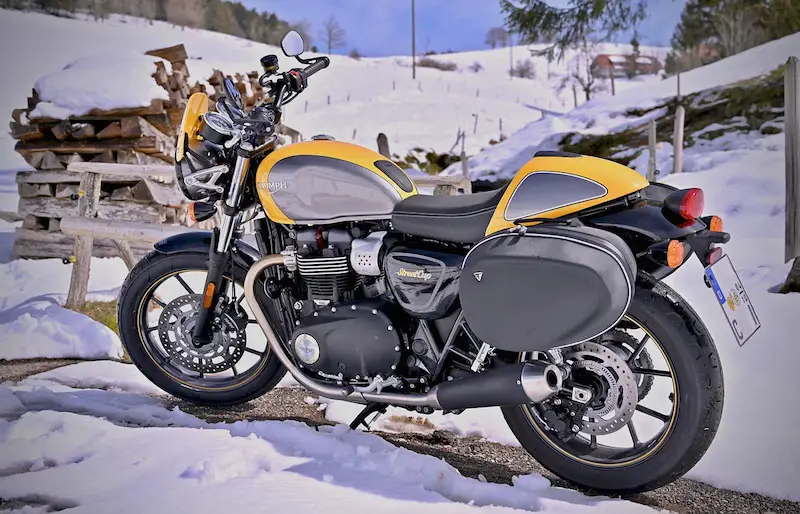
Another common problem people run into with carbureted bikes is that the engine is too cold for the motorcycle to start. This isn’t the problem you’ll run into with a fuel injected bike, though it could be a regular issue if your bike is carbureted.
What happens is you’ll hit the starter and the bike might attempt to start, but it won’t catch. Don’t keep trying to start it when it’s cold as you’ll only run down the battery.
The reason that occurs is that the gasoline isn’t fully evaporating when it’s mixed with air during cold temperatures. Combustion doesn’t occur correctly and the carburetor isn’t able to fire up the bike.
It’s even possible for ice to build up within the carburetor. This would make it impossible for the fuel and air mixture to make it through the engine and get the bike started.
How to Start Your Motorcycle in Cold Weather
The best way to start a motorcycle in cold weather is to warm it up using a space heater or hair dryer. Plug in the space heater or hair dryer and point it directly at the engine and carburetor.
After about 20 or 30 minutes the engine and carburetor should be warm enough that you’ll be able to start it. Hit the starter again and the bike should fire right up.
To avoid this issue entirely, consider parking the motorcycle indoors or using an insulated motorcycle storage shed. Anything you can do to keep it directly out of the cold weather elements will make it easier to start as the temperatures begin to drop.
Blown Fuses
The main symptom of blown fuses is that the motorcycle will sound totally normal when you start it up but the engine will never catch. It will keep turning without the engine ever firing up.
Even with a carbureted bike, you could spray starter fluid into the carburetor and it still won’t start up. This is because a blown fuse isn’t able to get the spark plug to ignite, making it impossible for the bike to start.
How Does a Fuse Get Blown?
Generally, a blown fuse is caused by a bad ground wire. This is definitely the problem if you’re regularly having to replace the same fuse.
Another reason is that there was an issue with the wiring for aftermarket lights, horn, or any other additional electronic accessory. People don’t always follow instructions and it’s possible that the wiring was done incorrectly.
How to Fix a Blown Motorcycle Fuse
There is only one specific fuse used for starting your motorcycle. Every motorcycle comes with a main fuse between 30 to 50 amps.
You can typically find the fuse off of the positive battery wire. It’s either going to be a regular block fuse or an inline fuse depending on the bike.
Start by checking the main fuse to see if it’s blown. You’ll know that it’s blown if there’s black material on the fuse or if the fuse wires inside are disconnected.
If you notice the fuse is blown, replace the fuse. Most motorcycles come with spare fuses and you’ll be able to easily find fuses online or at your local automotive parts store.
If the fuse keeps blowing, you’ll need to find the wire that is causing the problem. Test the wires using a multimeter until you find the issue and replace or fix the wiring as necessary.
Bad Spark Plugs
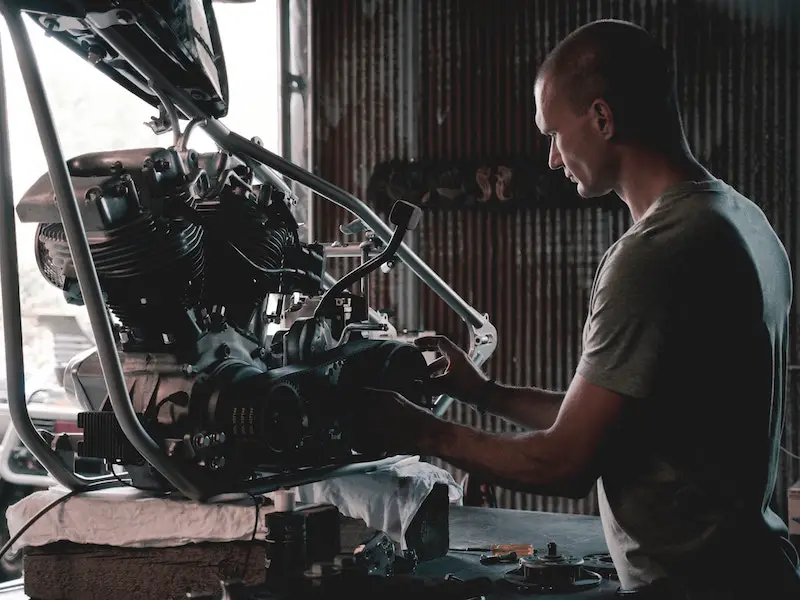
If you notice your motorcycle is running poorly, feeling gutless, or sounds louder than normal it’s possible the spark plug is about to give out. This is another reason why your motorcycle won’t turn over but won’t fire up.
Inspecting and changing the spark plugs is a part of basic motorcycle maintenance. Check your owner’s manual to see when the spark plug should have been replaced and if it’s been a while then this could be your issue.
How to Fix Bad Motorcycle Spark Plugs
Each bike has its own removal and installation process for spark plugs. Start by referring to the owner’s manual to determine which specific spark plugs you need for your motorcycle.
Next, buy the new spark plugs and get started with the replacement process. Always replace all of the spark plugs on your bike at the same time to avoid any starting issues in the future.
Take a look at our post on the best motorcycle spark plugs. This will give you some good motorbike spark plug recommendations you can use on your own bike.
Clogged Injector
With a clogged injector the bike will attempt to turn over, but there won’t be any combustion. If you have checked that it’s sparking correctly and that there is gas in the tank, the culprit is probably a clogged fuel injector.
This is a common problem with bikes that have been sitting for a long time. It’s even possible to manually inspect the fuel injectors with them needing to be replaced if they’re dirty and clogged.
How Do Fuel Injectors Get Clogged?
This is not something that will happen very often with a fuel-injected motorcycle. As long as you’re riding a motorcycle regularly, fuel will be constantly flowing through the injectors and keeping them clean.
What happens when you let the motorcycle sit for a long period of time is the injectors get clogged. The fuel becomes gelled and clogs the injectors, which prevents fuel from flowing through them.
How to Fix Clogged Fuel Injectors on a Motorcycle
If you’ve determined that clogged fuel injectors are your issue, it’s a good idea to replace the fuel injectors. They aren’t expensive and this will ensure your motorcycle is running smoothly.
Alternatively, you can pick up a fuel injector cleaner that you can run through the engine and injectors. This doesn’t always work, although it’s a cost-effective way for cleaning the fuel injectors without having to replace them.
Bad Starter
For motorcycles with electric starters, it’s possible for the starter to go bad and stop working. The biggest giveaway is that the starter will make strange sounds when you go to start the bike.
If you notice any clicking, buzzing, or whirring coming from the starter and the bike isn’t starting, it’s likely that the starter is shot. It’s possible that the starter won’t make any noise at all, which is another sign that the starter is no longer working.
How Does a Starter Stop Working?
Starters aren’t a motorcycle component that’s designed the last forever. There are only so many times the starter can be used before it eventually fails.
It’s also possible that poor wire connections or overheating can damage the starter and prevent it from working correctly.
How to Fix a Broken Motorcycle Starter
Unfortunately, it’s not usually possible to fix a broken starter. In this case, you’ll have to pick up a new starter and install it on your motorcycle.
Cracked Spark Plug Wires
If you’ve gone through a few other fixes and your motorcycle still isn’t starting, check the spark plug wires. A cracked spark plug wire would prevent the motorcycle from starting.
This is easy to check and a simple fix. Visually inspect the spark plug wire and look for anything that’s broken, cracked, or damaged.
If you notice any issues with the wire, they’ll need to be replaced immediately. Be careful when you’re inspecting the wires as it’s possible to get shocked if a spark jumps through the wire.
How Do Spark Plug Wires Crack?
The wires are usually made from rubber or plastic material. Wear and tear, weather conditions, and constant heat eventually wears down this material, leading to cracks and other damage.
How to Fix Cracked Spark Plug Wires?
This is an easy fix. All that’s necessary is to replace the damaged spark plug wire.
Since you’ll be replacing one, it’s not a bad idea to replace all of them at the same time. This way you’ll know they’re all in great shape and won’t have to worry about them for a while.
No Air Flow
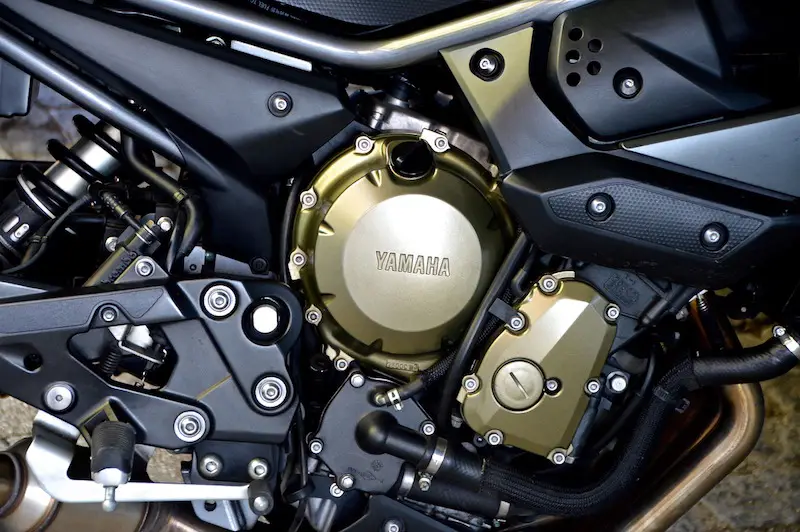
The motorcycle engine needs a constant flow of air to keep running properly and efficiently. If you have issues getting the bike started or it’s stalling intermittently you could have an air flow problem.
Start by inspecting the air filter in the air box. If it’s clogged or dirty then this could be the main problem. Try removing the air filter and starting the bike.
If the motorcycle starts up right away then you know the problem is with airflow. Refer to your owner’s manual to see where the air filter is located and how to remove it.
This problem is usually caused by a dirty air filter that hasn’t been replaced or cleaned in a long period of time.
How to Fix an Air Flow Problem?
This is an easy fix. Remove the air filter from your motorcycle and clean it or replace it.
You can refer to your owner’s manual or look on YouTube for specific details on how to replace the air filter on your motorcycle.While it’s possible to pay a mechanic to do this, it’s something that can easily be done on your own.
The Engine Timing is Off
Although this isn’t a common issue, it’s worth mentioning if you’re having trouble starting your motorcycle. With the engine timing off, it’s likely that your motorcycle won’t even turn over.
When you go to start it, you’ll probably hear a ticking noise. It’s possible that the engine is started and then immediately backfires or stalls.
If your motorcycle is having oil leak issues while running, is smoking like crazy, or you hear the engine ticking when it’s running, the timing is probably off.
How to Fix Motorcycle Engine Timing
Unfortunately, this is not an easy fix and is not something for beginner mechanics to work on. If you think the engine timing is off you should probably bring your motorcycle to your local mechanic.
Alternatively, look on YouTube for helpful videos on how to fix the motorcycle engine timing on your particular bike.
To get started, the crankcase cover on the to be removed. After being removed you’ll be able to see a timing mark on the stator.
This mark will need to be lined up with the engine mark. Next, the valve cover needs to be removed and the valves need to be checked and verified that they are positioned correctly.
Seized Engine
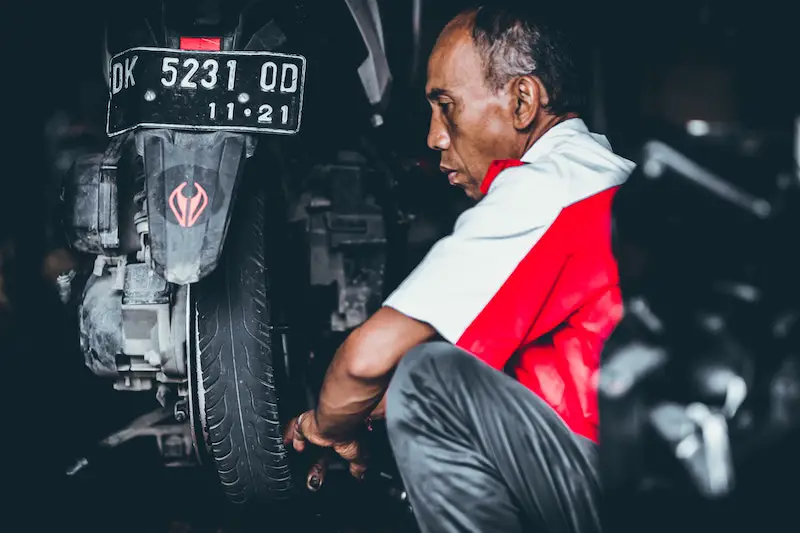
If the engine is seized and equipped with an electric starter, the engine won’t even turn over when you attempt to start it. The starter will make a brief ticking noise and then start humming.
This humming is the sound of the electric motor trying to spin the engine and being unable to do so. During this process you might even blow the main fuse with all the amperage getting built up.
If your bike is equipped with a kickstarter, try kick-starting it in neutral. If you’re not able to move the kickstarter at all then the engine is probably seized or the transmission is bad.
How Does a Motorcycle Engine Become Seized?
The main reason a motorcycle engine seizes is from a lack of lubrication. Another popular reason is from old or dirty oil.
It’s also possible for rust and grime to build up on the cylinder walls, which can happen for a bike that has been sitting for a long period of time.
How to Fix a Seized Motorcycle Engine
This is not something many of you will be able to fix on your own. If you determine your motorcycle engine is seized, the best course of action is to bring your bike to your local mechanic.
Otherwise, you’ll want to head to YouTube and check out some videos related to your motorcycle. It’s still a good idea to bring the bike to a mechanic, as possible to damage it further by working on it without the right experience.
The Kill Switch is On
Leaving the kill switch on is something that even the most experienced riders forget about. If you head out to start your bike and you don’t hear anything at all, you probably forgot to turn the kill switch off.
Using the kill switch to turn off your bike generally isn’t the best way to turn it off. Instead, turn the ignition off rather than relying on the kill switch.
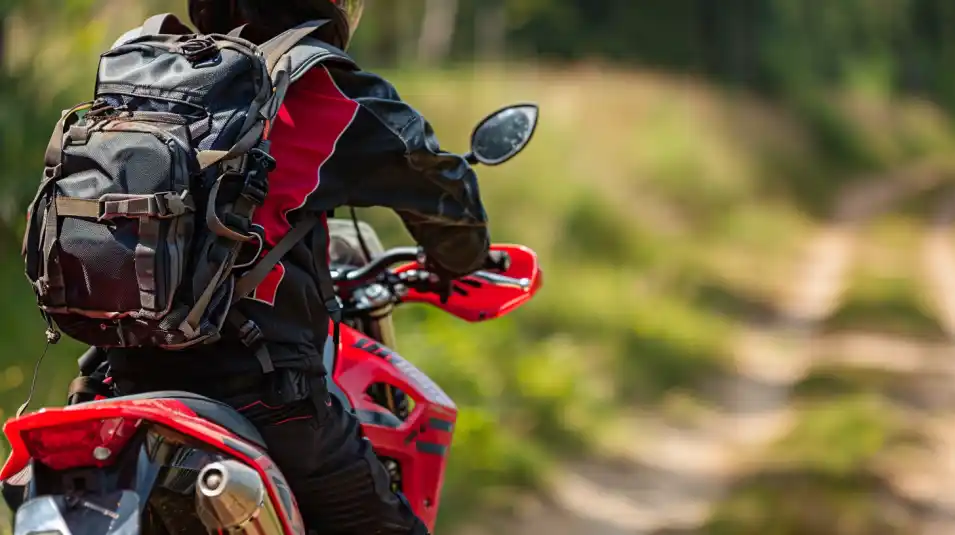
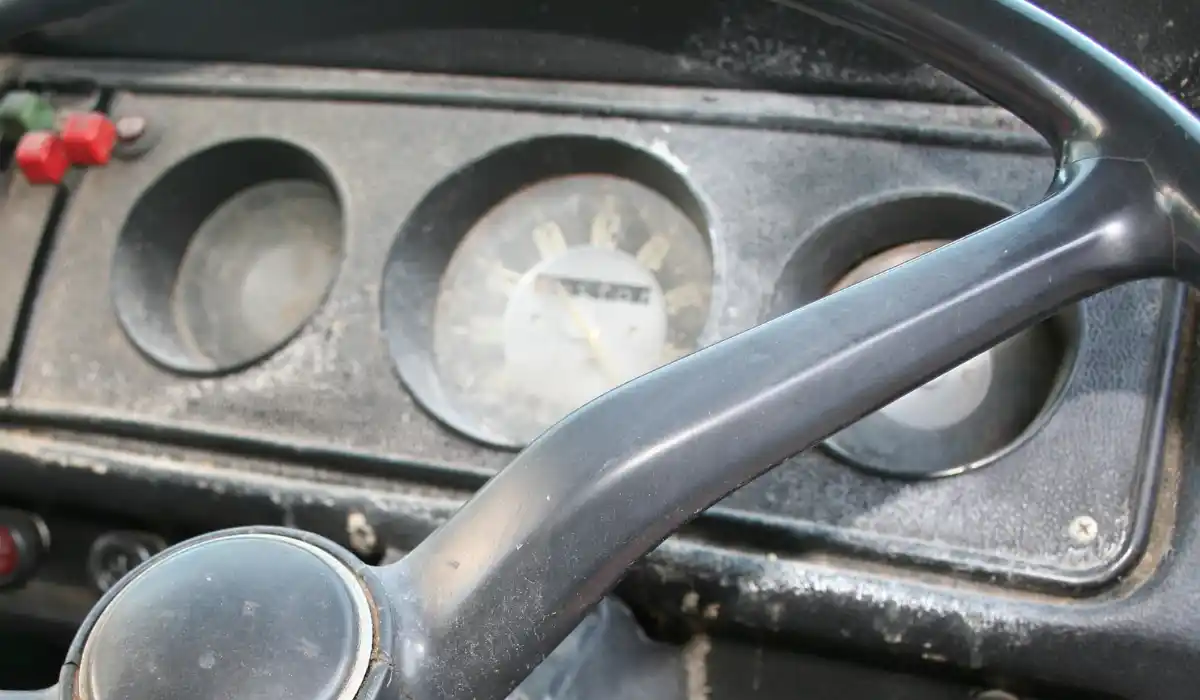
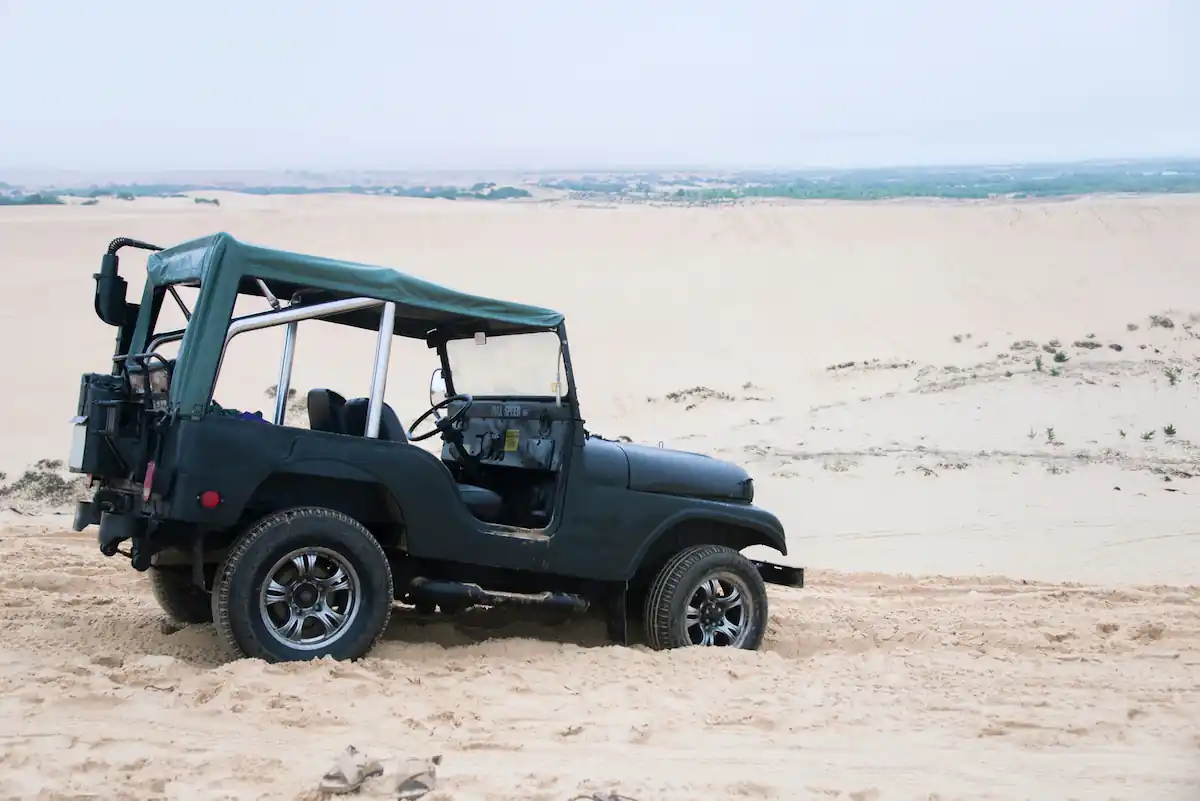
Leave a Reply